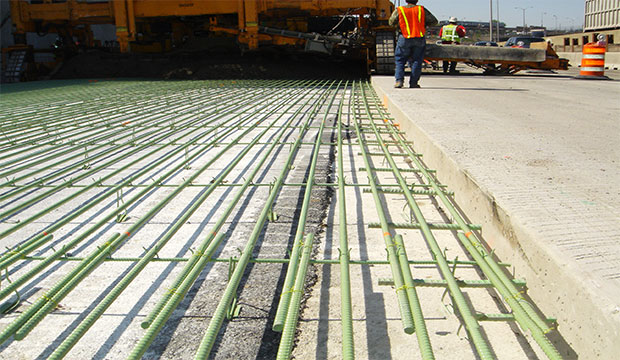
The proper methods for reinforcing steel placement

In bigger projects iron-workers generally arrange the reinforcing steel but most contractors also arrange some reinforcement. At the time of concrete placement, it becomes difficult for the performance of the structure, to keep reinforcement in the exact position. Reinforcement should have been arranged as demonstrated in the drawings. The detailer will specify the number of bars, bar lengths, bends, and positions there.
Cover
In order to arrange the reinforcing steel perfectly, the exact amount of concrete cover should be obtained. The concrete cover means the amount of concrete among the reinforcing steel and the surface of the concrete member. Cover is used to safeguard reinforcing steel from corrosion. Cover is also essential to make sure that the steel is tied to the concrete perfectly to keep its strength stronger. The necessities for lowest cover are generally provided in the project specifications or demonstrated on the drawings. If not mentioned, the lowest cover for cast-in-place concrete is stated by the ACI 318 Building Code.
Positioning
It must be noted that the design of the structure is dependent on placing the steel in the exact place. If the placing of steel is improper, serious concrete structural failures may occur. For example, if the top bars are reduced or the bottom bars are increased by ? inch in excess of that indicated in a 6-inch-deep slab, its load-bearing capacity is minimized by 20%.
If the reinforcement is placed over a layer of fresh concrete and then poured more on top, it is not a suitable process for placing. Reinforcing bars should be used to provide supports. The reinforcing bars are formed with steel wire, precast concrete, or plastic. Chairs and supports are obtainable in different heights to provide support to particular reinforcing bar sizes and positions. Usually, plastic accessories are economical as compared to metal supports. There are three tables provided by The Concrete Reinforcing Steel Institute's Ready Reference Reinforcing Steel Resource Guide or the classic Placing Reinforcing Bars, which display most of the currently accessible supports in the different materials and define the situation where each is applied efficiently.
It is not sufficient to just place the bars on supports. Reinforcing steel should have been fastened to avoid displacement throught construction progression and concrete placement. This is generally done with tie wire. Tie wire is available in 3- or 4-pound coils. Wires are arranged in a wire holder or a reel is put off from the worker's belt for ease of access. The wire is usually 16?- or 16-gauge black, soft, annealed wire, but there should be 15- or 14-gauge wire for heavyweight reinforcement to retain the exact position of the rebar. Diversified tie types (ties are fundamentally wire twists for joining intersecting bars), ranging from snap ties to saddle ties, are utilized in the concrete reinforcing industry. CRSI's Placing Reinforcing Bars demonstrates the types of ties and defines the situation where each can be applied most efficiently.
For tying epoxy-coated bars, apply PVC ties (accessible from American Wire Tie). Proprietary snap-on ties like the Speed-Clip Rebar Tie from Con-Tie Inc are also accessible. This is a user-friendly device that connects rebar in parallel or at any angle manually. No need to use any tools.
While tying bars, it is not necessary tie each intersection?every fourth or fifth is usually enough. It should be noted that the tie adds no strength to the structure, it should be applied only when the steel is dispositioned throughout concrete placement. Ensure to retain the ends of the tie wires ahead of the surface of the concrete to avoid rust. For preassembled mats or reinforcing steel, tie adequate intersections to transform the assembly inflexible enough for placing?usually each intersection just about the outside and each other in the middle of the mat. Tack welding the intersections is not generally allowed, as it minimizes the cross section of the bars.
To read the complete article visit, www.concreteconstruction.net


